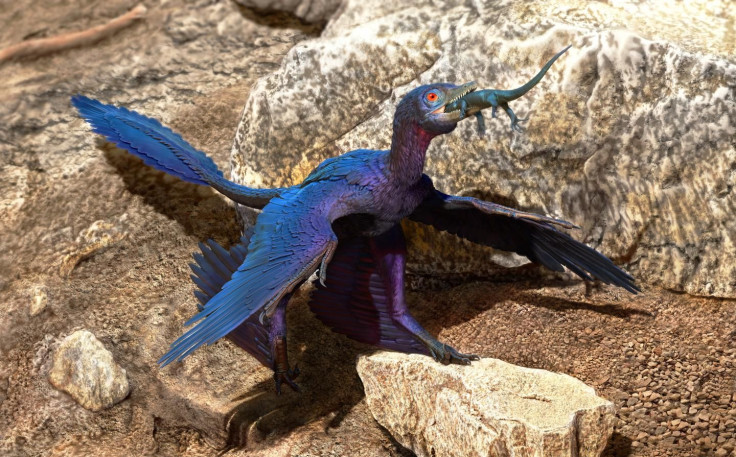Last Meal: This Four-Winged Dinosaur Had Literal Foot In Mouth [Photo]
KEY POINTS
- The 120-million-year-old fossil belonged to a small, four-winged dinosaur named Microraptor
- In its stomach, a foot belonging to a mouse-sized mammal was found
- The fossil was found in a place called Jehol Biota in northeast China
Researchers have found the first evidence of a dinosaur eating a mammal, more specifically, a mammalian foot.
The 120-million-year-old fossil belonged to a small, four-winged dinosaur named Microraptor zhaoinus. In its stomach, a foot belonging to a mouse-sized mammal was found.
"It's so rare to find examples of food inside dinosaurs, so every example is really important as it gives direct evidence of what they were eating," Dr. David Hone from the Queen Mary University of London, first author of the study published in the Journal of Vertebrate Paleontology, said, reported The Guardian.
Fossil of Dinosaur Eating a Mammal Found in China
— Archaeological News, Paranormal, Space and UFO (@nevadaknight67) December 21, 2022
To be accurate, this first-ever fossil of its kind – a dinosaur with mammal inside – was found 22 years ago but the contents of Microraptor’s stomach have only just been noticedhttps://t.co/kLqCQFZBxY#Dinosaur pic.twitter.com/UBvdkvG3za
"This study paints a picture of a fascinating moment in time – the first record of a dinosaur eating a mammal – even if it isn't quite as frightening as anything in Jurassic Park," Hone said.
The Microraptor was a tree-dweller belonging to the Cretaceous period. The fossil was found in a place called Jehol Biota in northeast China, and has proved to be a treasure trove for finding dinosaur specimens.
The record-creating fossil was first discovered in 2000, but its significance eluded the researchers at the time. A second look by another team, years later, led to the discovery of the mammalian foot.
The researchers believe the Microraptor might have eaten more mammalian body parts, and not just the foot.
"The foot seems completely intact, and thus was swallowed whole. How much of the mammal was swallowed is unknown," lead author, Hans Larsson, a paleontologist at McGill University, said. "However, there were several other unidentified bones around the foot in the rib cage, so I suspect that more of that mammal was consumed."
Interestingly, this specimen is the holotype. In other words, it was the first specimen of its species to be found and named.
The mammal foot had similarities to the features of Sinodelphys, Yanoconodon, and Eomaia, all ancient species of rodent-like early mammals, the team said. Also, the mammal was unlikely to be a good climber, and it can be inferred the Microraptor may have occasionally swooped down from the trees to prey on animals.
Other previous Microraptor fossils had preserved diverse meals in their stomachs, such as a bird, lizard, and fish.
"Gut contents are amazing snapshots into the diet of fossil animals, but they are so rare that it can be difficult to figure out whether the preserved 'last meal' represents the animal's normal diet or a weird, one-off event that lucked into getting fossilized," Stephanie Drumheller-Horton, a paleontologist at the University of Tennessee, Knoxville, who was not part of the study, told Gizmodo.
"Microraptor is shaping up to be a very interesting exception to that rule, with multiple, beautifully fossilized specimens preserving different 'last meals,'" Drumheller-Horton added. "Taken together, the authors make a compelling case that this little theropod wasn't a particularly picky eater, eating all sorts of small-bodied animals in its environment."

© Copyright IBTimes 2025. All rights reserved.





















